Trip Report, Grayland Beach CN76
ba...@k7bwh.com
On Aug 9-11, 2021, Mon-Wed, I activated CN76 on the southwest coastal corner of Washington state. This is my trip report. I hope all the pictures survive the email reflector; if not, see the same report on www.coilgun.info/travel/2021-08-cn76.htm
The main purpose was to shakedown my 6m amplifier setup and scout some operating locations. It would be nice to provide this rare grid to lots of people but it’s very late in the 6m season and we didn’t expect much skip to occur.
CN76 is a thin dotted-line grid square along the coast. The closer part of CN76 includes Grays Harbor with a narrow opening to the Pacific Ocean. The northern spit enclosing the large harbor is Ocean Shores (a solidly developed tourist trap city) and the southern spit is Westport. I’ve explored Ocean Shores previously and skipped that area since I wanted to find places around Westport and the southern peninsula.

The trip from Seattle is under 200 miles and less than 4 hours of driving.
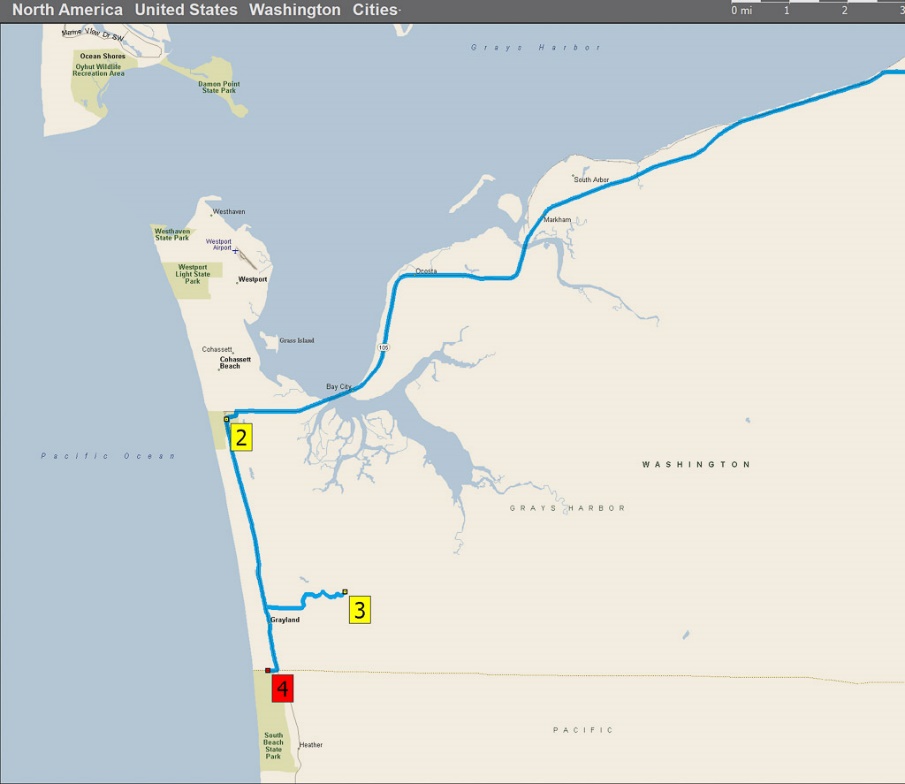
Here’s a closer look at the target area. I scouted:
- Twin Harbors State Park (don’t go, it’s full of screaming kids),
- Hills above the town of Grayland with forest service land (don’t go, it’s gated off at 46.81390, -124.06482), and
- Grayland Beach State Park (really nice!).
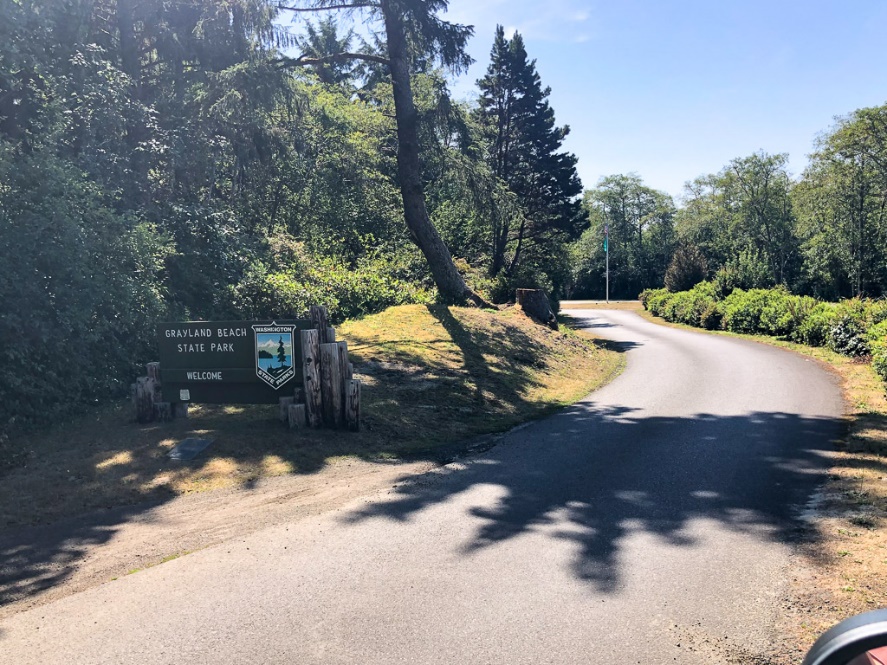
It turns out Grayland Beach SP is the most wonderful state campground I’ve seen.
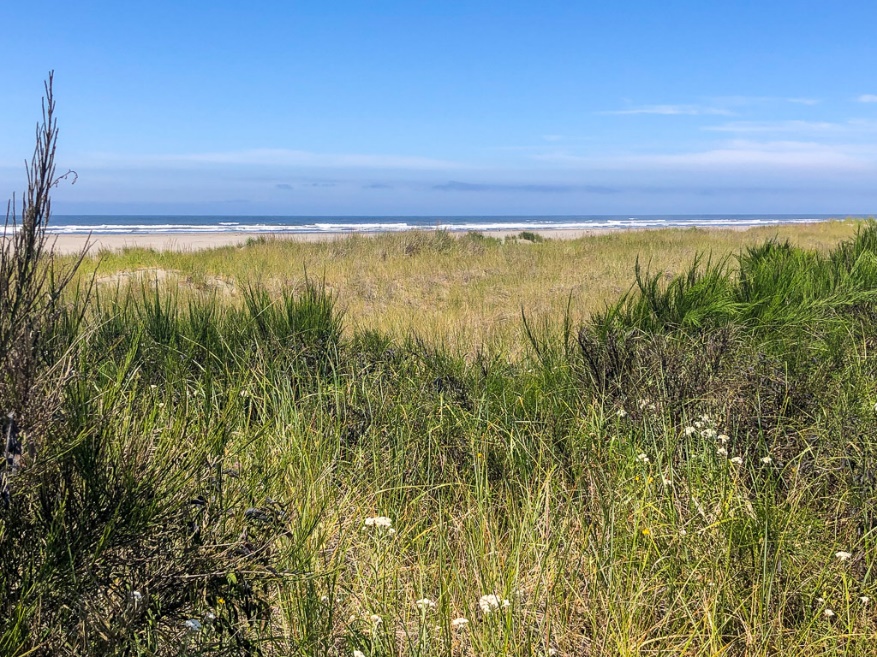
Clean, quiet, well-kept, and a short walk to the expansive beach.
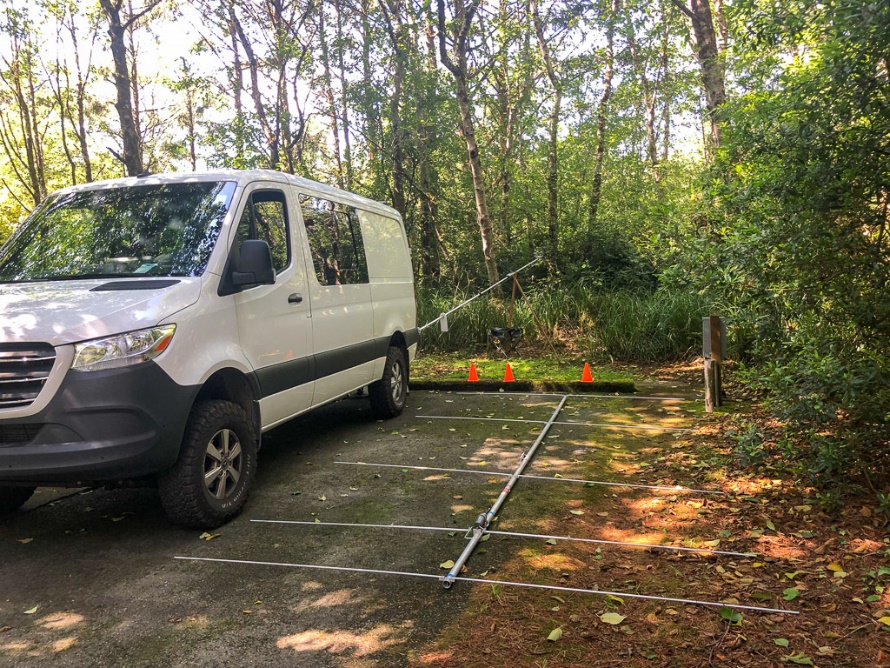
Every campsite is shielded by trees above and between guests.
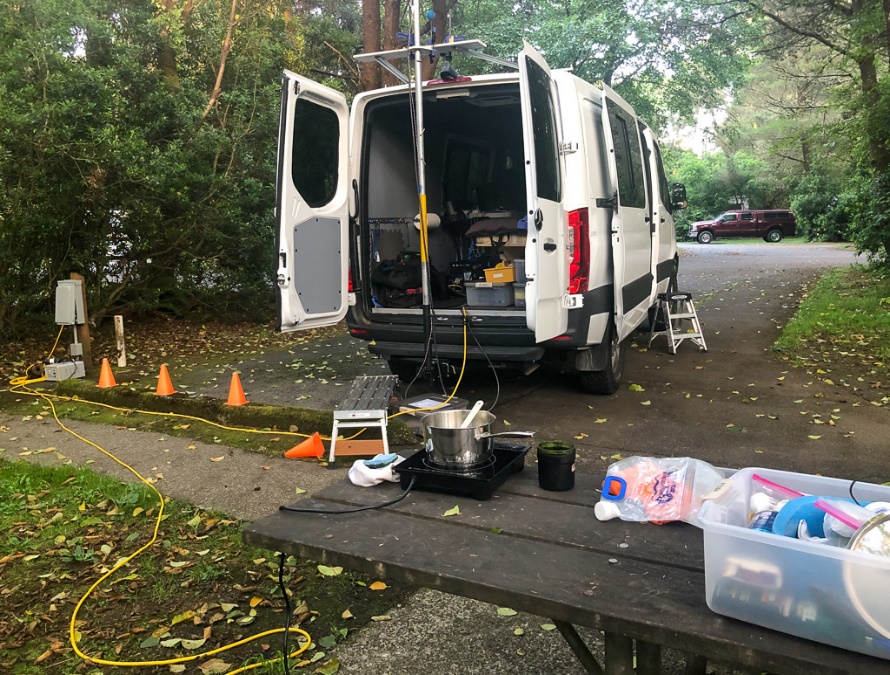
I paid $45/night for a full hookup site. It felt luxurious to run all my gear from shore power. Generators were not allowed so some of my preparations were wasted, but there’s no way to know before the trip. I somehow managed to convince myself to not feel bad about the extra work.
The operating setup got a kilowatt amplifier and a few small changes since my last trip (North Point CN78). The SSPA amp is strapped to the floor’s L-track on the left end of the table. The big power cords and coax goes under the anti-fatigue mats (works great to keep them out of the way).
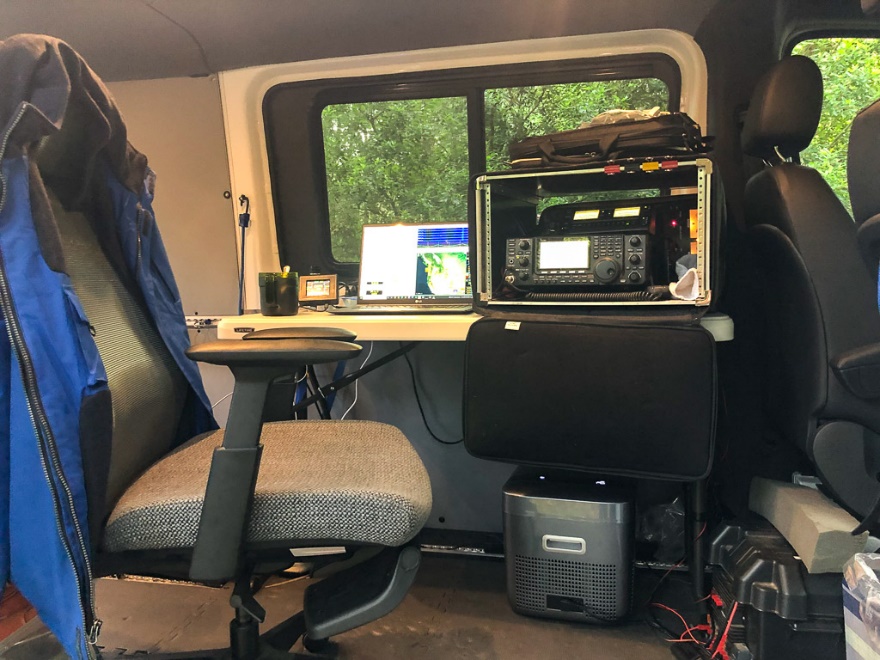
The fridge moved under the table so the battery could be more out of the way, protecting its fragile wiring. This turned out to be truly awful: the fridge requires crawling on knees and holding a big hanging flap out of the way. Maybe it’s my new diet plan. I must find a more usable spot.
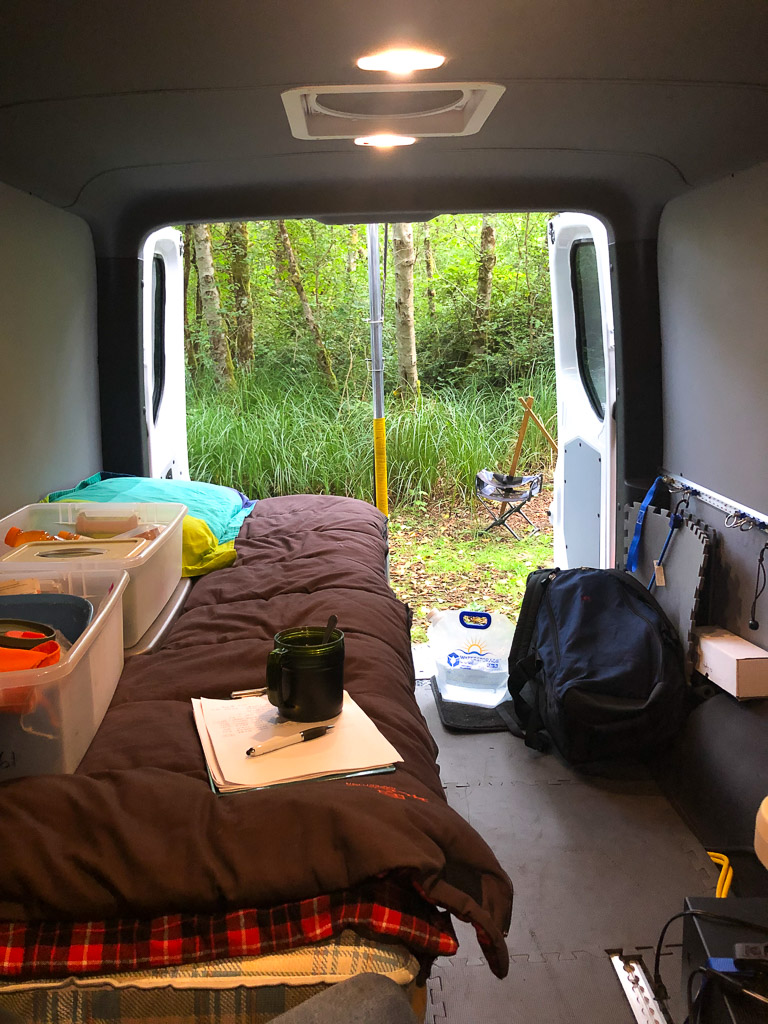
The "minimalist camper van" bed and operating position that I designed is working out to be every bit as nice as I hoped. The open aisle from chair to the mast at the back door makes it easy to rotate the antenna without putting on shoes. This is very comfortable and reduces tracked-in dirt.
We used Slack VHF Chat channel to coordinate many attempts to reach hams on my list of 40 who had indicated interest. Our constant hope is to reach those chasing the grid for FFMA. This trip was well past the E-skip season on 6m and conditions didn’t support anything beyond 1200 miles. It sure would’ve been fun if there was triple-hop to Puerto Rico for Edfel KP4AJ!
- I was on-site about 43 hours with total on-the-air time about 24 hours.
- 72 contacts on 6 meters using WSJT
- Farthest QSO was 1,160 miles to K7BG in DN94.
- Second-farthest 1,074 miles to John NA6L using the new Q65 mode.
- Once again I consumed my remaining cellphone data and bought another 1 GB. This is tiresome. I need a new data plan.
The biggest problem was lack of propagation – the equipment worked great, the 6-meter ionosphere not so much. There was practically no skip; almost all my contacts were by ground wave and meteor scatter, which should be expected at this time of year. This might have been exacerbated by the lowland sea-level location and a 5-degree horizon to the east but there’s no easy way to tell. That’s always the dilemma of 6-meter expeditions: you don’t know if there’ll be any skip until you get there. The best expeditions will stay in one place for a few days.
A new power outlet strip with four USB built-in outlets solved my problem of filling a standard 6-outlet strip with USB charging warts. The new outlet came from Amazon with brand name Pukvat. It only has 3 regular power outlets which, after eliminating all my USB warts, is actually one more usable 110v outlet than my previous outlet strip.
The kilowatt amplifier worked flawlessly, an Icom PW-1. The remote head on the desk is particularly convenient. However, it’s large and terribly heavy to install in the vehicle. My dream is to someday replace it with a smaller and more portable amplifier powered directly from a 48v lithium-ion battery bank.
Thanks everyone for finding me on the air. I’m pleased to add two net spots, CN76ws and CN76wu, to my rover location database in this rare grid.
73 Barry K7BWH
